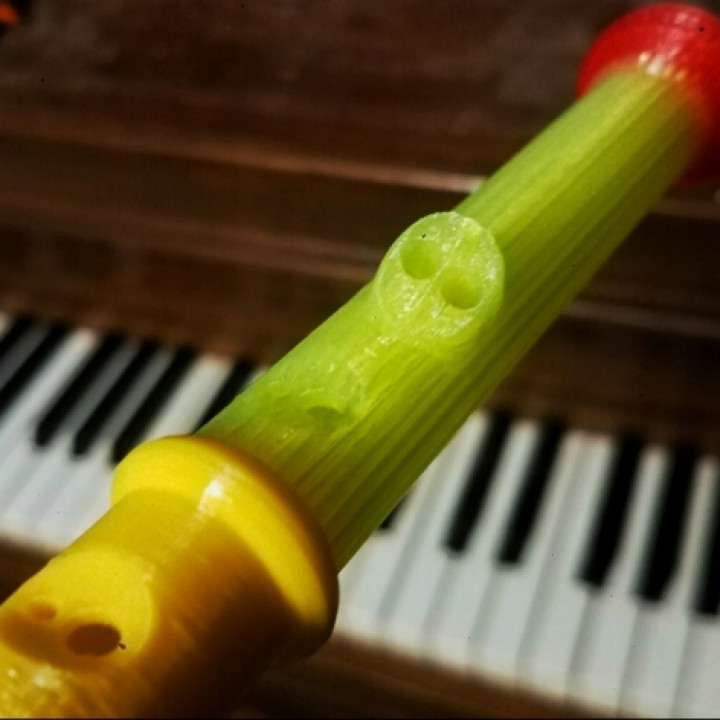
Recorder Extended with Bb Hole - includes Fingering Chart
myminifactory
Remixed from Recorder V2.3 by cymon. Update 2021-05-17: Minor fixes to the foot and second segment. Adjusted the sizes of the low B/Bb holes for better tonality (the low B natural was formerly too sharp). Increased the height of the ridge for easier playability. This is an update to the classic soprano recorder in C. Its range covers an extra full step lower than the traditional instrument, without obscuring the bell. It will also play in the upper register from Bb to high Db, although the highest notes require more breath pressure and will sound loudly. Demonstration here: https://youtu.be/iD4_P0DqAaU To play, you'll want to use all digits on your left hand and four fingers on your right. The only learning curve is playing F now involves lifting your index, not middle, finger, and changing from F to G involves moving both hands. The extra protruding hole at bottom plays low B if half closed (and all other holes closed) and low B-flat if fully closed. There's a resting notch for your right thumb for optimal hand position. Refer to the fingering chart for more details. If printed in PLA, the tone will be warm, woody, airy, and flute-like, especially in the lowest notes. Some prints produce better lower notes than others and I'm not sure why; this was also true of the design I remixed from. PETG gives a clearer, somewhat brighter tone, but still very definitely a flute sound. I have not had luck with ABS for this design because even slight layer adhesion problems can produce a weak sounding or non-sounding recorder. For the same reason, I will not try it in PC. Prints best with a raft with a wide margin to prevent the print head rocking the pieces loose during print. Do not enable supports. Recommend first testing your filament with a vase design to ensure it will print airtight. PETG and Silk PLA seem to work especially well; certain composites can under extrude if the filament surface is too rough, producing an instrument that won't make sound. Best results are obtained from thick walls (3-4 layers or more) and high infill, at least 50%. Bed adhesion and layer adhesion are critical; surface smoothness is also important. I found a raft with a 15mm margin (Cura has this setting) and .15mm air space ideal for preventing pieces from breaking loose during printing. After printing, the joints should be very tight and not want to go together. If they are loose, your instrument will squeak or not make sound. I recommend sanding the joints and applying some petroleum jelly to help make a good seal. One user has found success heat softening the joints rather than sanding them, but I have not tried this.
With this file you will be able to print Recorder Extended with Bb Hole - includes Fingering Chart with your 3D printer. Click on the button and save the file on your computer to work, edit or customize your design. You can also find more 3D designs for printers on Recorder Extended with Bb Hole - includes Fingering Chart.
